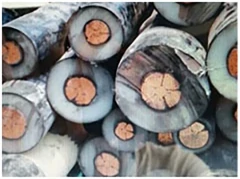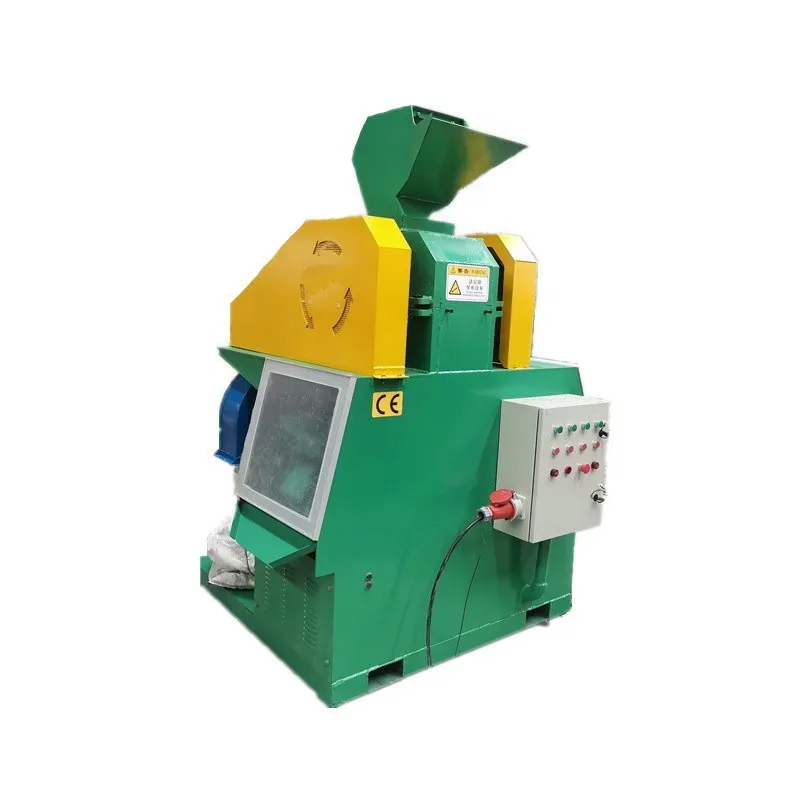In the rapidly evolving landscape of industrial machinery, the shaft shredder machine has emerged as a pivotal tool for waste management, recycling, and material processing industries. These machines, renowned for their efficiency and durability, continue to attract attention for their ability to handle a wide array of materials, from plastics to metals, with adept precision.

The essence of a shaft shredder machine is its cutting assembly, which generally comprises one or two shafts with knives or blades designed for shredding. Depending on the intended use, these machines can vary in terms of size, capacity, and engineering complexity, offering tailored solutions for different industrial needs. This configuration not only augments the shredding efficiency but also extends the lifespan of the machine through reduced wear and tear, showcasing a blend of sophisticated engineering and practical application.
A core advantage of shaft shredder machines is their versatility. They are adept at processing various materials, including rubber, wood, and different kinds of scrap metals. This versatility is particularly beneficial for recycling operations that demand adaptive solutions to handle diverse waste streams. Moreover, the ability of these machines to shred material down to customizable sizes makes them invaluable for secondary processing stages in manufacturing cycles, ensuring that materials can be repurposed effectively and efficiently.

From an expert perspective, one of the critical innovations in modern shaft shredder machines is the advancement in blade technology. The use of high-alloy steel or tungsten carbide-tipped blades signifies a leap in resilience and efficiency. This innovation directly correlates to a sharper, more durable cutting edge, reduced downtime due to maintenance, and overall enhanced productivity. Moreover, variable speed settings and torque capabilities further amplify their functionality, allowing operators to modify performance based on the specific requirements of different materials.
shaft shredder machine
Authoritativeness in the field of shaft shredders often comes from a company’s history and reputation in delivering reliable machines. Established manufacturers usually boast extensive portfolios and client testimonials that vouch for their product’s efficacy in real-world conditions. These companies often invest in ongoing research and development, ensuring their offerings remain at the cutting edge of technology and meet stringent safety and environmental standards. The development of noise reduction features and energy-efficient motors are reflective of this commitment, aiming to minimize the environmental footprint and comply with global ecological standards.
Trustworthiness in this context is also about comprehensive service support and warranty provisions. Manufacturers who offer robust after-sales support, including training, maintenance services, and genuine spare parts, are often seen as more reliable. This framework not only assures continued machine performance but also establishes a crucial layer of trust between the manufacturer and the client, reinforcing the long-term operational success of the machinery and providing peace of mind.
Drawing from extensive real-world experience, it's evident that successful operation of a shaft shredder machine requires not only initial technical know-how but also ongoing operational familiarity. Operators need to be adept in monitoring the machine’s performance, recognizing signs of wear, and executing timely maintenance. Regular training and updates on the latest technology are essential components for maximizing the machine’s utility and ensuring safe operation.
In industries demanding precise material processing, the shaft shredder machine stands out as an integral piece of equipment. Its combination of innovation, versatility, and operational excellence makes it indispensable for modern waste management and recycling operations. With the continuous evolution of technology and industry practices, these machines are set to become more efficient, eco-friendly, and adaptable, promising a future where resource efficiency and environmental consciousness coalesce seamlessly.


